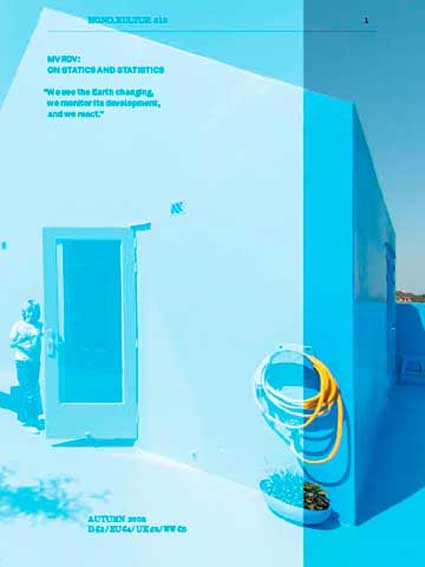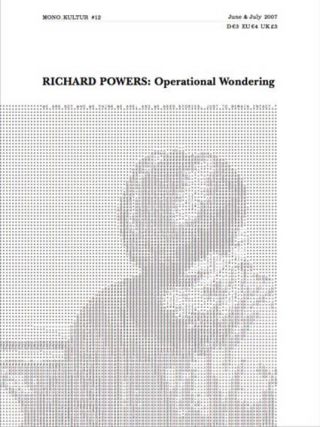
MVRDV
availability unknown, if interested please write an email
We see the Earth changing, we monitor its development, and we react.
In 1997, the architecture and design world saw in MVRDV’sVilla VPRO evidence of a sea change washing over the profession. At this moment, when the height of building design was dominated by tired, over-rehearsed variations of modernism (Norwegian modernist Sverre Fehn took the Pritzker Prize that year, the architectural equivalent of the Nobel), and architecture theory was flung far into the depths of post-structuralist rhetoric, MVRDV opened a view into the future of architecture that was both smart and sexy. The Villa, new accommodations for Dutch media broadcasting company VPRO, was tight, photogenic and an instant success with architecture students around the world. VPRO, known for its offbeat, pseudo-anarchic programming, had its architectural incarnation in MVRDV’s design. Reviewers lauded the building’s various accomplishments: its balance of dynamism with clarity of form, its stylish references to the constructed Dutch landscapes, its open-ecology office that encouraged the cross-pollination of ideas between workers. In Villa VPRO, people saw form as an active animator in the building’s function. Its curves, twists and slices provided what looked to be an exciting element of danger. The building’s floors, which ramped up and flipped down, appeared to echo Claude Parent and Paul Virilio’s revolutionary call for architecture to challenge the comforts of horizontality and ‘destroy the monopoly of the orthogonal.’
But where Parent and Virilio sought to be revolutionary, MVRDV employs irony and subversion. Their now instantly recognizable WoZoCo apartments for the elderly in Amsterdam-Osdorp (1997) similarly use this strategy. With only 87 of the proposed 100 living units fitting within the regulations of Cornelius van Eesteren’s 1934 building codes, which ensure that adequate sunlight and green space surround new buildings, MVRDV hung the remaining 13 units off of the north façade of the structure – projecting entire apartments implausibly from the main structure like a chest of drawers opened to the hilt. MVRDV appropriated the antiquated building codes, retooling their logic of constraint and conformity into guidelines for innovation.
The processing of codes, data and information makes up a significant portion of MVRDV’s output. Since the 1990s, the firm’s principals, Winy Maas (1959), Jacob van Rijs (1964) and Nathalie de Vries (1965) – MVRDV is an acronym of their surnames – have been engaged in theoretical research both in the office and in collaboration with academic and civic institutions. Pig City (2000-01), based on data collected by Wageningen University, is a proposition to construct 40-storey towers fitted with a Taylorist, self-sufficient robotic rearing system that feeds, cleans, houses and butchers the animals during the 180 days of their lifespan. In 1999, the number of inhabitants in the Netherlands equalled the number of pigs; and if each pig requires 1,726 square meters of land including space for feeding, processing and food storage, 75% of the country’s area could eventually be taken over by pork production. Stacking the farms into towers meant that pigs would not be competing with humans for a larger footprint in such a densely populated country. ‘With data, we can do everything,’ Maas explained to me the morning we met. To some, including right-wing politician Pim Fortuyn (whose murder by an animal rights activist was linked to his endorsement of the project), Pig City was a visionary path to a viable future. Others saw it as a measure of how desperate the situation of our ecology has become, how uncertain our future seems if the only solutions remain deep within the realm of fantasy. Of course, there was never a real threat of the Netherlands being converted into a sprawl of pigsties: many farmers converted to fish farming or simply moved their operations to Denmark or Poland as developers began competing for more land. As architects, what MVRDV constructed in Pig City was not a building per se, but a platform from which to discursively appraise our footing and coordinate a strategy to proceed. Though we shouldn’t forget that the platform afforded by high-rise farming, so to speak, is built upon the very socio-economic structures of limitless consumption that gives us pause in the first place.
Herein lies the difficulty of identifying MVRDV’s architectural partisanship: the firm is too accepting of the mainstream techno-messianic rhetoric to be critics, and too pragmatic and instrumental in their designs to be proper visionaries. Behind their somewhat corporate, acronymic name (think IBM, AT&T, HSBC) lies not a univocal brand concept, but a fluid arrangement of parallel, intersecting, colliding and discrepant ideas. This split character remains, despite past journalistic attempts to amalgamate MVRDV’s divergent and contradictory nature. One of the firm’s most comprehensive interviews for their 2003 El Croquis monograph was published with the three principals melded into a single voice in response to interview questions.
The problem with this apparent unanimity is not merely a question of accuracy or authenticity, which it is, but it furthermore disallows the reading of the very complexities and divergences that make the firm really fascinating. MVDRV has three drivers, not one, behind the steering wheel, and when I went to their office to meet with van Rijs and de Vries, I arrived at a very different MVRDV than what Maas had presented to me a few weeks earlier in Berlin.
One way to think about this split identity in MVRDV’s work is to understand their projects, both built and unbuilt, visionary and traditional, as moments in a continuous multimedia dialogue. By theorizing the possibility of cities that ‘know no given topography, no prescribed ideology, no representation, (and) no context,’ Metacity/Datatown (1998), one of MVRDV’s earliest research projects, cleared the field for later projects by questioning established architectural axioms through formalizing the spatial implications of the information age. The city, as pure data, was able to take on previously unimaginable forms. In one instance, leafy Karst peaks reach into the sky, their height determined by the type and amount of data they represented. In another, the city surface was multiplied by stacking ground planes on top of one another in an endless pile – the underside of one plane serving as the artificially lit fluorescent sky of the plane below.
It was no surprise that MVRDV’s Dutch Pavillon for the Expo 2000, a commission they received while producing the research for Metacity/Datatown, was quite literally a series of stacked ecologies. At each level, the visitor arrived at a different Dutch landscape: dune, greenhouse, forest, water and polder. The fluorescent sky from Metacity/Datatown reappears here, illuminating the fourth-floor forest. The structure was topped with windmills. Stripped of a façade, its layered contents were exposed like a club sandwich – altogether presenting a strikingly un-nostalgic vision of the Dutch landscape.
Layered programming became somewhat of a popular meme for the office. Their 2000 competition entry for the Oslo opera house took the shape of a gigantic stack of dominoes that not only contained the opera’s several theatres, but supported a number of unlikely mid-air pine forests. The following year, MVRDV submitted a design that would replace the warren of long, tight corridors and meager offices at The Hague’s Ministry for Agriculture with a series of stacked glass houses, each containing several stories of offices flanked by an indoor park.
This conversation among theoretical projects, built work and competition entries about the potential of ecological densification through stacking culminated in the 3D City_Cube project (2005) developed through the Berlage Institute in Rotterdam. Dispelling the limits of budget while maintaining a strict adherence to real life facts and figures, the aim of the study was to test the possibility of a self-sustaining 59 km3 volume that would house one million people. Like Hans Haacke'sCondensation Cube (1965), an image of which is on the inside cover of an early MVRDV publication, the City_Cube is an illustration of the reciprocal action of biological and physical systems. With each edge of the cube city spanning five kilometers, the structure is organized in synthesized sectors that radically change the way we use our space: while 44.81% of the cube is forest, only 1.03% is reserved for housing and offices. If the total surface of the Earth were to be covered by these city cubes, each with a footprint of 25 km2, MVRDV concluded that the Earth can actually support 5,100 billion people. That would be, mind-bogglingly, 850 times larger than our current global population.
Volumes have been devoted to the presentation of the firm’s designs, theories, collaborations, studies, exhibitions and teaching, not to mention the nine books that have been produced under the MVRDV name. Though their recent collaboration with Brad Pitt’s Make It Right Foundation to rebuild the Katrina-devastated Lower Ninth Ward of New Orleans found them once again in the media spotlight, some of their latest projects languish as the recycled gestures of past successes. What of this architectural sea change that we witnessed with Villa VPRO in 1997? CCA building (2006) in Amsterdam looks essentially the same as their design for Container City (2002). Their housing projects, Mirador (2004, Madrid) Parkland (2006, Rotterdam) and Celosia (under construction, Madrid), all feature the same cut out façades. Ours is a culture of newness, and despite efforts to grow deeper, more profound, oftentimes if you’re not the next best thing, you’re not rewarded with careful attention.
What we gain in pondering MVRDV is insight into the richness of a practice that is embedded as much in reality as it is in the theoretical dimensions of the virtual – a position many of us find ourselves straddling as our own lives negotiate between the anxieties of a warring world and the vast frontiers of cyberspace.
























